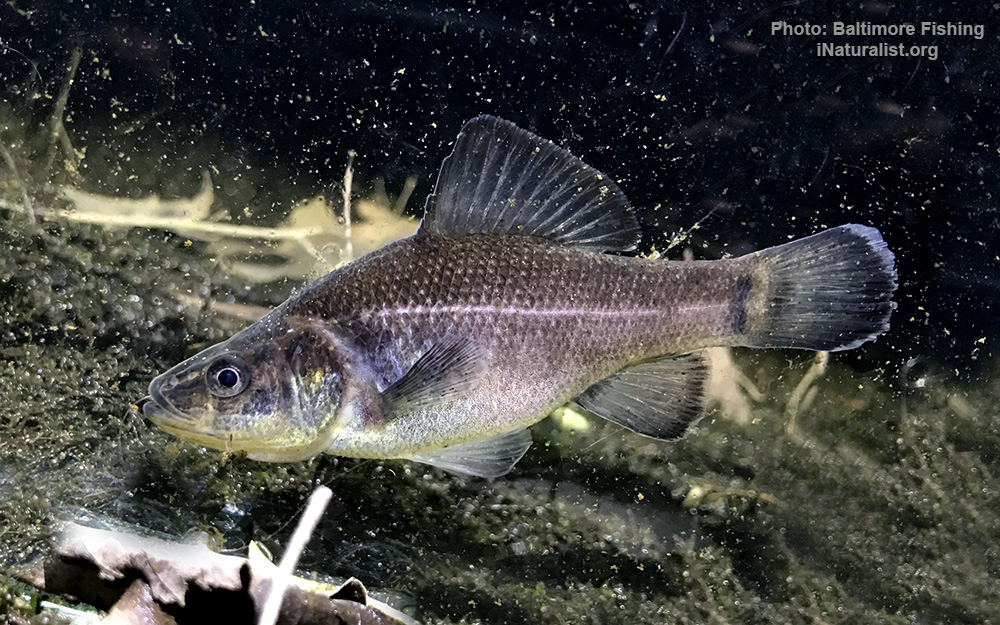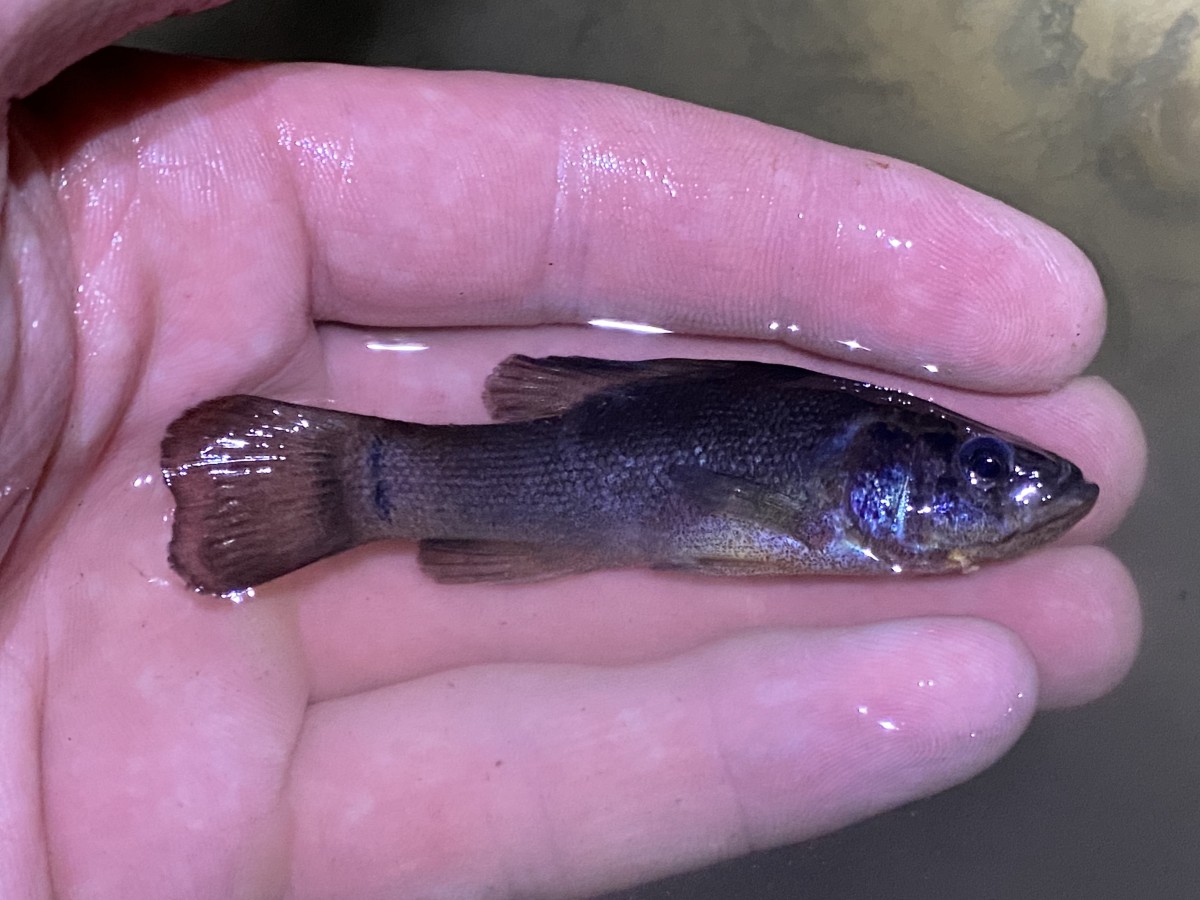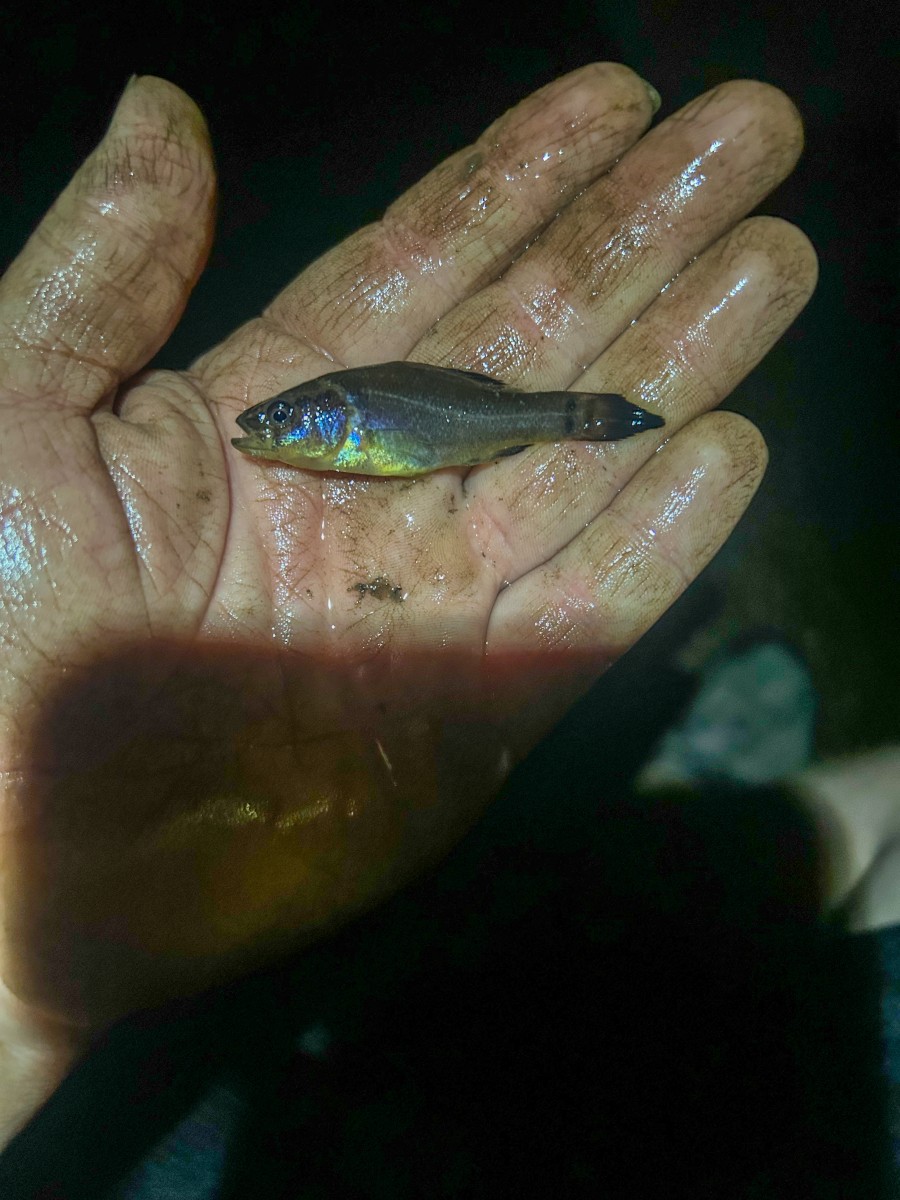Yellowbelly Pirate Perch
(Aphredoderus sayanus)

Image source: baltimorefishing1 | inaturalist.org
Classification
General data
The pirate perch (Aphredoderus sayanus) is a freshwater fish that commonly inhabits coastal waters along the east coast of the United States and the backwater areas of the Mississippi Valley. This species is often found towards the bottom of clear, warm water habitats with low currents. These fish are normally solitary, carnivorous, and nocturnal. The pirate perch is known to consume live mosquito larva, amphipods, glass shrimp, meal worms, small fish, dragonfly and stonefly larvae, and earthworms.
The pirate perch is related to the trout-perches, but only loosely; it is the only species in its family, Aphredoderidae. The specific name sayanus is a tribute to naturalist Thomas Say. Charles C. Abbott gave the fish its common name after observing it eating only other fishes.
Description
This small fish is up to 14 cm (5.5 in) in total length. It is dark brown, sometimes with a darker band near the base of the tail. A unique feature of this fish is the forward placement of its cloaca, under the head, anterior to the pelvic fins.
Pirate perch may be the only known animal to exhibit a chemical camouflage, or crypsis that is generalized and effective among a wide number of potential prey species.
Distribution
The pirate perch is a freshwater species found in temperate climates where the water temperature generally ranges from 5 to 26 °C (41–79 °F). They are found most commonly in central and eastern North America. The pirate perch occurs in rivers of the Atlantic and Gulf slopes, the Mississippi Valley, and scattered parts of the eastern Great Lakes Basin.
Pirate perch had once occurred in Pennsylvania, but has since been extirpated due to the effects of urbanization, according to the Nature Conservancy. Its geographic range is very limited in the United States, and the creation of dams and the increasing effects of urbanization are restricting the overall habitat size for the fish, which could eventually lead to this species becoming extirpated in some areas.
Ecology
These fish can be found in densely vegetated areas, places with woody debris, and underneath banks in root masses. Debris in deep water with undercut banks and slow inside flows are used more by this species. The area where the perch reside is dependent on their size, with medium to large perch occupying places that were more structurally complex than small ones. They are known to congregate in these areas to avoid predation from piscivorous birds, otters, or mink. The pirate perch has nocturnal feeding habits; their diet consists of live mosquito larva, amphipods, glass shrimp, meal worms, small fish, dragonfly and stonefly larvae, and earthworms.












